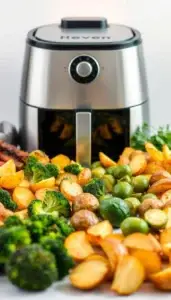Imagine a steaming bowl of flavorful broth, filled with an assortment of succulent seafood and springy noodles. This dish is not just a meal, it’s an experience that will transport you to the bustling streets of Japan.
Craving a delicious and satisfying meal? Look no further than this mouthwatering ramen dish, packed with a variety of seafood delights.

You can easily recreate this delightful dish at home with a simple recipe. Get ready to indulge in a culinary adventure that will leave your taste buds wanting more.
Key Takeaways
- Learn how to make a mouthwatering seafood ramen dish at home.
- Discover the key ingredients needed for this recipe.
- Understand the steps to create a flavorful broth.
- Explore the variety of seafood options to include.
- Tips for customizing the dish to your taste.
The Magic of Seafood Ramen
Seafood ramen is special because of its rich flavors and health benefits. You can make a delicious and healthy bowl of seafood ramen. It combines different seafood, making a savory broth.
What Makes Seafood Ramen Special
Seafood ramen is unique because of its mix of seafood. It includes shrimp, mussels, and scallops. These add flavor to the broth and boost protein and omega-3s, making it a healthy seafood ramen choice.
Health Benefits of Seafood in Your Ramen
Adding seafood to your ramen makes it more nutritious. Seafood is full of vitamins and minerals like zinc and selenium. These help your immune system and overall health. So, enjoying seafood ramen is a tasty way to take care of your body.
Essential Ingredients for the Perfect Seafood Ramen Recipe
Making the perfect homemade seafood ramen needs careful picking of ingredients. The quality and mix of these parts will greatly affect your dish’s taste and realness.
Seafood Components
The seafood parts are the main attraction in your seafood ramen. You should pick a mix that offers both texture and taste.
Best Types of Shellfish to Use
For shellfish, think about using shrimp, mussels, and clams. These add a salty taste and freshness to your ramen.
Fish Options for Ramen
For fish, salmon or tilapia are good picks. They give a soft texture and a mild taste that goes well with the broth.
Broth Ingredients
The broth is the base of your homemade seafood ramen. Mix seafood shells, kombu, and katsuobushi to make a deep, savory dashi.
Noodles and Toppings
Your seafood ramen noodles should be springy and just right. Add green onions, sesame seeds, and pickled ginger for more depth and freshness.

Preparing Your Seafood Components
The secret to a delicious seafood ramen is in how you prepare the seafood. Doing it right makes your dish taste better and feel more satisfying.
Cleaning and Preparing Shellfish
Begin by cleaning your shellfish well. Scrub the shells to get rid of dirt. For mussels and clams, throw away any broken shells. Then, rinse them under cold water to remove grit. Proper cleaning is essential to avoid a gritty texture in your ramen.
Preparing Fish and Other Seafood
Cut your fish and other seafood into small pieces. For shrimp, peel and devein them if needed. Cut fish into small cubes so it cooks evenly. Uniform pieces are crucial for even cooking.
Marinating Options for Enhanced Flavor
Marinating your seafood can make your ramen taste better. Mix soy sauce, sake, and a bit of sugar for a marinade. Let the seafood marinate for at least 30 minutes. This step makes the seafood’s flavors richer, adding to the broth.
| Seafood Type | Preparation Method | Marinating Time |
|---|---|---|
| Shellfish | Scrub and rinse | Optional |
| Fish | Cut into cubes | 30 minutes |
| Shrimp | Peel and devein | 30 minutes |
Creating the Perfect Seafood Ramen Broth From Scratch
To make an authentic seafood ramen, start with a rich broth. The broth is the heart of this dish. Its quality can make or break the taste.
A great seafood ramen broth is clear, flavorful, and rich. To get this, you need quality ingredients, the right technique, and patience.
Basic Seafood Broth Technique
To make a seafood broth, simmer seafood parts like bones and shells in water. This extracts flavors and nutrients, making a savory broth.
- First, prepare your seafood parts, like fish bones and shrimp shells.
- Simmer these in water with onions, carrots, and celery for flavor.
- Strain the broth to remove solids and get clarity.

Flavor Enhancers and Seasonings
While basic broth is good, adding flavor enhancers can make it better. Common ones include:
- Kombu (dried kelp) for umami
- Dried shiitake mushrooms for depth
- Soy sauce or miso paste for saltiness
- Yuzu or citrus for brightness
Try different mixes to find your perfect flavor.
Achieving the Right Consistency and Depth
The broth’s consistency and depth are key. To get the right feel, you can:
- Simmer the broth longer to concentrate flavors.
- Add thickeners like cornstarch or flour for the right thickness.
For more depth, add layers of flavor with different ingredients and techniques. A famous chef once said,
“The key to a great broth is in the layers of flavor you build, not just the ingredients you use.”
By following these tips and trying new things, you can make a authentic seafood ramen broth. This will take your dish to the next level.
Step-by-Step Cooking Process for Your Homemade Seafood Ramen
Now that you’ve got your ingredients ready, it’s time to start cooking your homemade seafood ramen. You’ll need to cook your noodles just right, add seafood at the perfect time, and then put everything together in your bowl.
Cooking the Noodles Properly
Cooking the noodles is key. For quick seafood ramen, aim for al dente noodles. Boil them for 2-3 minutes or as the package says. Then, drain and set them aside to avoid overcooking.
Adding Seafood at the Right Time
Adding seafood at the right moment is crucial. You want it to be perfectly cooked, not overcooked or rubbery. The timing varies based on the seafood type.
Cooking Times for Different Seafood
Seafood cooking times vary. Shrimp cooks fast, in 1-2 minutes. Mussels and clams take 2-3 minutes to open. Fish and scallops also need 2-3 minutes. Watch them closely to avoid overcooking.
Preventing Overcooking
To avoid overcooking, add seafood to the hot broth just before serving. This lets you control the cooking time better. For delicate fish, pour hot broth over it in the bowl.
Assembling Your Ramen Bowl
Now, it’s time to put your ramen together. Start with noodles in a bowl, then add fish, shrimp, or other seafood. Pour hot seafood broth over it, making sure everything is coated. Top with green onions, sesame seeds, and a lemon slice for flavor and looks. Your quick seafood ramen is ready to enjoy.
Delicious Variations of This Seafood Ramen Recipe
Want to make your seafood ramen even better? Try out new flavors and ingredients. This dish is perfect for those who love to experiment and enjoy both comfort and adventure.
Spicy Seafood Ramen Option
Love a little heat? Add some spice to your seafood ramen. Use gochujang or sriracha in your broth for a kick. You can also add sliced jalapeños or spicy seafood like spicy tuna for more flavor.
Creamy Seafood Ramen Alternative
For a creamier version, add a dairy or non-dairy cream base. Coconut milk or heavy cream will make your broth rich. Try adding grilled shrimp or scallops for extra protein.
Regional Seafood Ramen Styles
| Region | Characteristics |
|---|---|
| Hokkaido | Known for rich, miso-based ramen with seafood. |
| Kyushu | Famous for tonkotsu (pork bone) ramen, but can be adapted with seafood. |
| Tokyo | Often features soy sauce or shoyu-based ramen, which pairs well with seafood. |
Conclusion
Now you know how to make seafood ramen. You can make a tasty dish at home with the right ingredients and techniques. It’s all about balancing the broth, noodles, and seafood.
Follow the steps in this article to make a seafood ramen that’s just like your favorite restaurant’s. Try different seafood and flavor enhancers to make it your own. As you get better, you’ll enjoy making seafood ramen at home.
So, get your ingredients ready and start cooking your seafood ramen today. With a little practice, you’ll be a pro at making this Japanese dish. Your taste buds will love it.
FAQ
What is seafood ramen?
How do I make a quick and easy seafood ramen?
What are the best types of seafood to use in seafood ramen?
Can I make a healthy seafood ramen?
How do I achieve the right consistency and depth in my seafood ramen broth?
What are some variations of seafood ramen I can try?
How do I prevent overcooking the seafood in my ramen?
Can I make authentic seafood ramen at home?
There are no reviews yet. Be the first one to write one.



